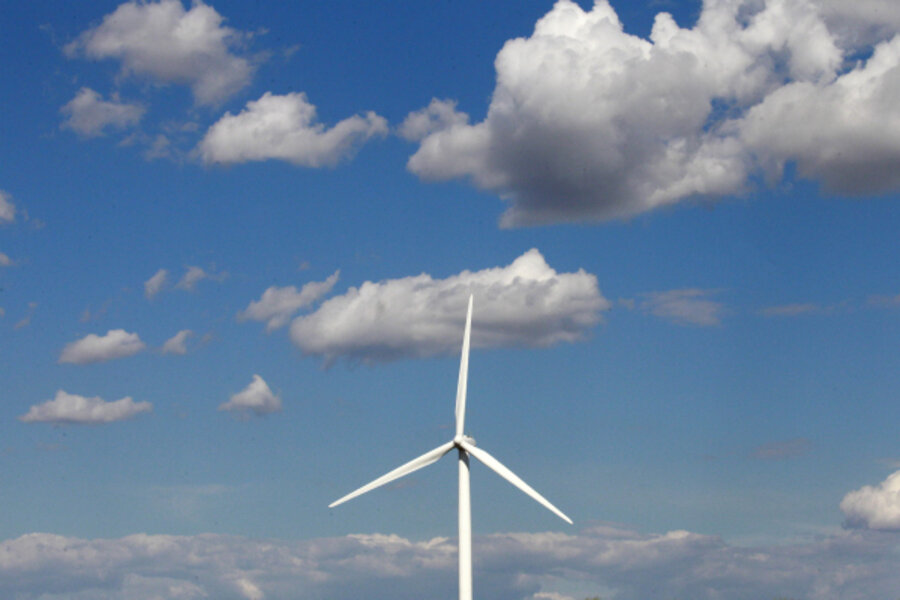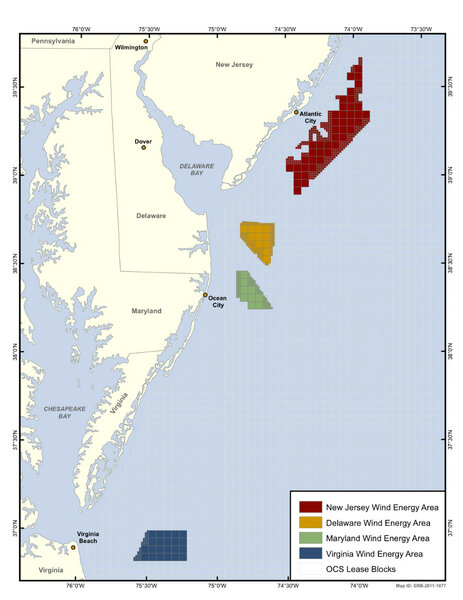Obama opens door to offshore wind power along mid-Atlantic coast
Loading...
The Obama administration today unveiled plans to boost US offshore wind power by opening up four new wind-leasing regions for wind turbine power generation.
Covering an expanse of nearly 800 square miles, the edges of the four zones would range from seven miles away from New Jersey's shore to 37 miles off the coast of Virginia.
The announcement signaled one big step closer to the reality of wind farms popping up along the eastern seaboard.
An environmental assessment by the Bureau of Ocean Energy Management found "no significant environmental and socioeconomic impacts" would result from issuing wind energy leases in designated Outer Continental Shelf areas, including zones off the coasts of Virginia, Maryland, Delaware, and New Jersey.
“When it comes to powering our nation’s homes, businesses and economy, we need to take an all-of-the-above approach to safely and responsibly developing our domestic energy resources,” Interior Secretary Ken Salazar said Thursday in front of Baltimore's World Trade Center. “Offshore wind holds incredible potential for our country, and we’re moving full-steam ahead to accelerate the siting, leasing, and construction of new projects.”
Thursday's announcement was an outgrowth of Secretary Salazar's 2010 launch of the department's “Smart from the Start” wind energy initiative whose goal was to accelerate siting, leasing, and construction of new offshore wind projects.
State officials praised the administration's decision, hailing its expected economic impact.
“To create jobs, a modern economy requires modern investments,” said Maryland Governor Martin O’Malley. “Maryland has emerged as one of the leaders in the effort to harness the power of offshore wind."
Virginia's Maureen Riley Matsen, Deputy Secretary of Natural Resources and Senior Advisor on Energy to Governor Bob McDonnell, called the move "a critical step toward making the valuable wind resource off of Virginia’s coast available."
Details of the wind-leasing region:
- New Jersey's zone begins seven miles from shore and extends roughly 23 miles seaward. The entire zone is 418 square miles overall.
- Off the coast of Delaware, leasing is available between incoming and outgoing shipping routes for Delaware Bay. The closest point to shore is 11 miles east from Rehoboth Beach and covers 122 square miles.
- The Maryland leasing area's western edge is 10 miles from the Ocean City. The entire area is 94 square miles.
- The western edge of Virginia's zone is 18 miles from Virginia Beach and the eastern edge 37 miles from Virginia Beach. The entire area is 164 square miles.
Thursday's announcement was hailed by wind-energy and environmental advocates who said it would create jobs and help the environment by lessening fossil fuel emissions from energy creation.
“Harnessing the wind blowing off our shores will allow us to power American homes with clean, domestic energy – and create tens of thousands of badly-needed jobs in the process," said Kit Kennedy, Clean Energy Counsel at the Natural Resources Defense Council in a statement. "It’s time to capture this untapped potential and for the offshore wind industry to take flight in the Mid-Atlantic.






